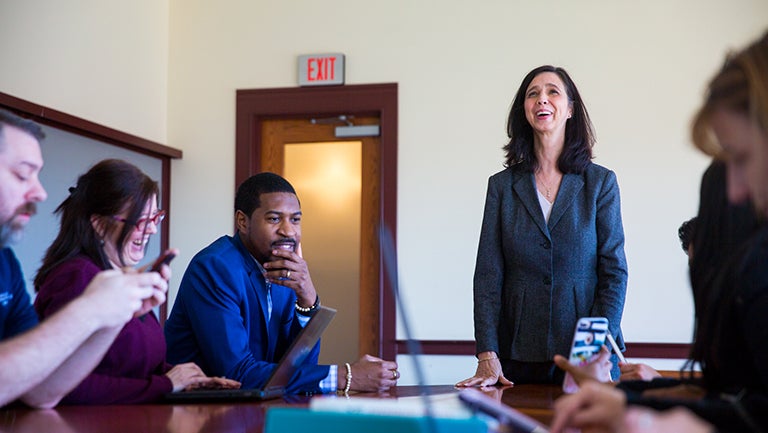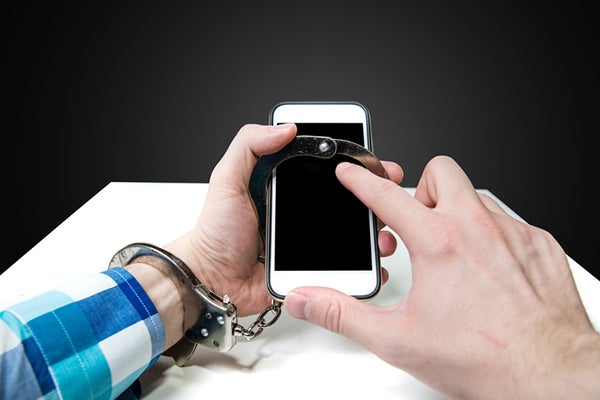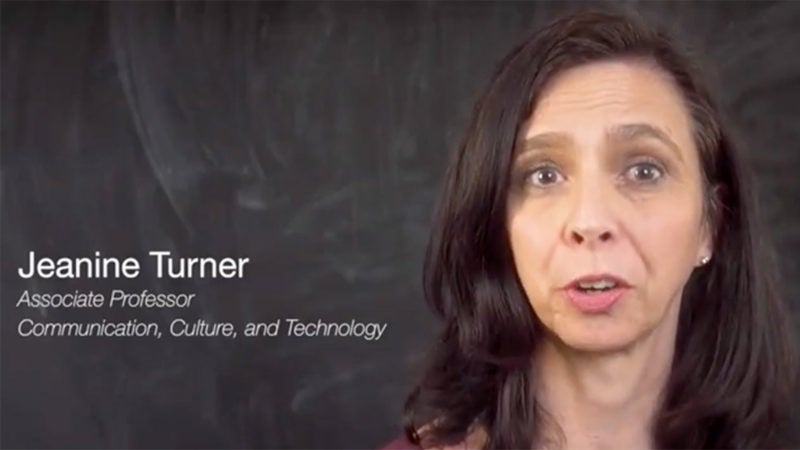Moment-by-Moment Decisions
The research, which will be published in the top scholarly journal Communication Theory, offers a new framework for regulating social presence. The framework establishes four types of presence – budgeted, entitled, competitive and invitational – and includes each type’s respective goals, benefits and costs.
“We want to help people understand how they can be strategic and intentional on a moment-by-moment basis, so they can truly understand the implications of their decisions,” Turner explains. “I don’t think people are thinking about that.”
Some companies, for example, ask workers to put their phones away in meetings while simultaneously holding them responsible for whatever happens while their phones aren’t accessible.
Managing Presence

She says that people are instead often just offended or upset that their conversation partners are not fully engaged, yet don’t feel comfortable saying anything.
“Managing social presence means that you recognize competing challenges that come with the ubiquity of digital devices,” the professor explains. “It’s important to realize that being in one conversation while also managing another has implications for relationships and learning while disconnecting completely for long periods of time is unrealistic. As a result, we need to intentionally think about where and how we will be socially present on a moment-by-moment basis.”
Budgeted presence, in which Turner says people spend most of their time these days, involves having one-to-one or group conversations face-to-face while also communicating using your laptop or phone.
Costs to Relationships

This presence type makes the most sense, she says, if you’re trying to be efficient and manage a lot of things simultaneously, but there may be costs to relationship development.
Relationships, she adds, are not always about efficiency.
“While budgeted presence can be the most efficient, staying in budgeted presence all of the time is hurting us,” she says. “It’s hurting our relationships, it’s hurting our spontaneity, it’s hurting our creativity, it’s hurting innovation. Because if you don’t intentionally put your phone down, then you’re in budgeted presence.”
Inviting Conversations
Thus one of the other types of presence – invitational presence – can be nurturing to relationships. Invitational presence invites another person into a conversation, recognizing and acknowledging that the digital device could be a disruption.
“If you want to create invitational presence, you might say to someone, ‘I’d like to have a conversation with you at dinner and I really value our relationship, so I’d like for us to not be on the phone,’ ” Turner explains, “so you’re not asking someone to put away their phone away, you’re inviting them to engage with you.”
Entitled and Competitive Presence
The two other types of presence are entitled presence and competitive presence.
Entitled presence is when your boss tells you to put your phone away before your meeting, implying that he or she is more important than you are and is entitled to your undivided attention.
Competitive presence is when people try to compete with whatever device is distracting them, such as their phones. An example would be allowing your students to keep their phones, but being so engaging that they decide to pay attention to you instead of their devices.
This can involve innovative attempts to keep people’s attention, Turner says, but the downside is that you may not be quite persuasive enough.
The New Normal
The CCT professor has been on the forefront of researching communication. She coined the term “multi-communicating,” a subset of multitasking, 10 years ago with professors Cathy Tinsley and Lamar Reinsch of Georgetown’s McDonough School of Business. Turner also teaches in the business school’s Executive Masters in Leadership Program, Global Executive MBA programand Executive MBA program.
“What’s so fascinating about multi-communicating is that it’s created this environment where more and more there’s a norm that it’s OK to have a conversation with someone while you’re doing something on your phone,” Turner says. “One study of smartphone use installed a sensor on devices to find out how many times people touched their phone in a day and it came out to 2,500. What does that mean for the way we interact?”
But Turner says she is not at all anti-technology.
“Technology means that I can talk to my parents every day in Ohio, that I can stay in touch with my kids, and I can share information with academics all over the country and internationally,” she notes. “More broadly, organizations can create teams that collaborate successfully across the globe.”
A Better Strategy
Turner believes people need to be more mindful of the advantages and disadvantages of being in different types of presence.
“I am particularly concerned that people tend to feel uncomfortable talking about these issues, leading to a lot of people just feeling offended or making unreasonable demands or even yelling at one another to get off a device,” she says.
A better strategy is for people to look at their goals and then weigh the pros and cons of each type of presence.
“Presence is about discernment,” she notes. “In a very short window communications are changing dramatically and it’s imperative that we come up with strategies for how to approach that,” Turner adds. “And if we don’t have a realistic strategy for how we handle this device that people have with them all the time, what is that going to mean for our interpersonal relationships, organizational relationships, work relationships?”

